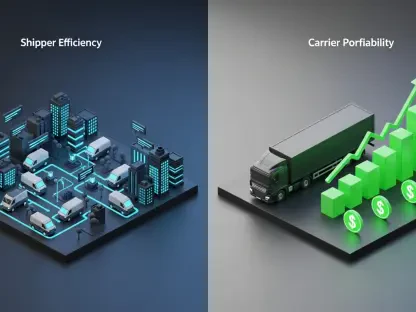Relief at the register sounds irresistible, yet the promise of mandated affordability often trades visible savings for hidden costs that surface as fewer choices, tighter access, and weaker service when firms rewire products to survive the rules. Policymakers have rushed to cap fees, fix benefits, and steer payments in the name of fairness, but the market’s response has been to reroute economics through narrower networks, higher non-price charges, and less innovation. This analysis assesses how these moves have reshaped healthcare, banking, and consumer credit, and what the next phase may hold for prices, availability, and competition.
Market Context And Purpose
Price controls gained momentum as households faced rising expenses and unpredictable fees, creating a political opening for hard caps and feature mandates. The rationale is straightforward: squeeze out “excess” margins and reassign gains to consumers. The outcome has been less straightforward because prices carry information about cost and risk, and when that signal is muted, market actors seek other ways to balance the ledger.
The goal here is to map cause and effect, not ideology. Evidence from insurance markets, debit routing, and consumer lending shows that caps rarely erase costs; instead, they shift them into less visible channels. Understanding that shift is essential for executives planning product strategy and for policymakers weighing the trade-offs of expanding rules this year.
Signals, Incentives, And The Mechanics Of Control
Markets allocate by price; interventions that force prices below risk-adjusted levels break that feedback loop. Firms then adjust scope, quality, and access, trading breadth for sustainability. In practice, that means narrower provider networks in healthcare, fewer free accounts in banking, and tighter underwriting in consumer credit.
Moreover, controls cascade. A cap on one fee undermines the revenue cross-subsidy that supported another feature, prompting redesigns that reverberate through the value chain. Over time, the mix of workarounds and subsequent rulemaking can steer industries toward more administered outcomes, where variety thins and averages stabilize at the cost of dynamism.
Sector Trends And Evidence
Healthcare: Mandates, Premiums, And The Narrow Network Trade
Coverage expansions brought guaranteed issue and essential benefits, but the economics of fixed benefits with restricted pricing power pushed insurers to manage cost elsewhere. Premiums and deductibles climbed while many plans moved toward narrower provider lists and fewer plan variants. Consumers gained protections on paper, yet found practical access bounded by tighter networks and higher out-of-pocket exposure, particularly for those just above subsidy thresholds.
The affordability paradox emerged: regulation shielded against denial but made comprehensive, broad-network coverage harder to secure without sizable subsidies. Insurers preserved solvency by trimming optionality and shifting cost-sharing—an adjustment consistent with how markets respond when risk can’t be fully priced into premiums.
Banking: Debit Caps, Merchant Gains, And Consumer Frictions
The Durbin Amendment capped debit interchange with the expectation that lower merchant costs would filter into retail prices. Banks, losing a key revenue stream, recalibrated by phasing out free checking, raising minimum balances, and adding account fees. A 2022 GAO analysis indicated that roughly two-thirds of noninterest checking accounts likely would have remained free absent the cap, suggesting the rule reallocated rather than removed costs.
Consumers faced higher frictions and fewer perks even as headline swipe fees fell. The product bundle changed: rewards diminished, account maintenance climbed, and service tiers hardened. Any pass-through to retail prices proved diffuse and hard to measure, while banking customers encountered immediate, visible changes to account economics.
Consumer Credit: Routing Mandates And The APR Ceiling Problem
Proposals to extend routing mandates to credit cards threaten the economics that fund fraud tools, data security, and rewards programs. Interchange-backed benefits become harder to justify when networks lose control over routing and pricing, pushing issuers to scale back programs or raise annual fees.
APR caps present a sharper edge. A hard ceiling, such as a 10% cap proposed at the federal level, disconnects price from default risk in unsecured lending. Lenders react by cutting credit lines, tightening underwriting, or exiting higher-risk segments altogether. Experience with a 36% cap in Illinois aligns with this logic; credit availability fell for riskier borrowers, who then turned to costlier or less transparent options. A 10% ceiling would be even more exclusionary, functionally restricting mainstream credit for many households with thin files or volatile income.
Outlook And Scenarios
Three trajectories are plausible. First, a continued tug-of-war in which each new cap spurs product redesign—narrower networks, reduced rewards, subscription-like pricing—followed by calls for tighter rules to plug perceived loopholes. Second, a policy reset that favors competition and transparency over administered prices, allowing risk-based pricing while targeting deception and collusion. Third, consolidation under heavier regulation, delivering steadier averages at the expense of variety, innovation, and frontier offerings.
Technology shapes all paths. Fintech can blunt the impact of caps with novel underwriting, embedded finance, and interoperable wallets, but compliance burdens and routing mandates can also blunt scale advantages. Expect more tiered services, dynamic pricing, and gated features as providers defend margins without breaching formal ceilings.
Strategic Implications And Playbook
For financial institutions, stress-testing revenue against fee caps and routing mandates is now table stakes. Diversifying away from capped income streams, investing in fraud prevention that reduces charge-off costs, and deploying clearer, standardized disclosures can preserve trust while protecting unit economics. In healthcare, data-driven network design and transparent cost-sharing can offset mandated benefits without gutting perceived value.
For policymakers, sharper disclosure and portability can do more than blunt caps. Open banking and interoperable standards reduce switching frictions and invite new entrants, amplifying competitive pressure without dictating price. Targeted enforcement against fraud and anticompetitive conduct corrects real harms while keeping price signals intact. When inclusion is the objective, pairing risk-based pricing with subsidies or guarantees helps higher-risk consumers access credit without distorting underlying incentives.
Closing View
The evidence pointed to a consistent pattern: when prices could not reflect risk and cost, markets adapted by shrinking choice, shifting charges, and slowing innovation. Healthcare plans narrowed, free checking receded, and unsecured credit tightened at the margins, even as rules promised relief. The most durable gains came from competition, transparency, and precise enforcement rather than from administrative caps.
The recommended path emphasized letting prices transmit information while cushioning vulnerable users through targeted tools and smarter market design. Firms that modeled regulatory contingencies, rebuilt product economics, and doubled down on clarity were better positioned to defend share. Policymakers who prioritized openness and accountability over ceilings advanced affordability without sacrificing access.









